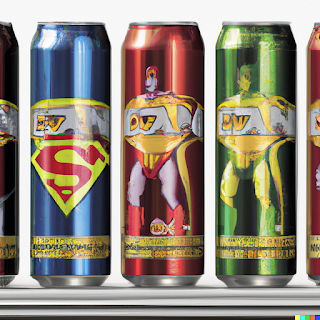How to 'dry hop' homebrew beer
Simply speaking, dry hopping is when the brewer adds hops in pellet form to the fermenter after the wort has been readied.
The brewer is, of course, using hops to improve the aroma of the beer and to add some bitterness to the brew (bitterness is best produced by the boiling of hops though).
The brewer is, of course, using hops to improve the aroma of the beer and to add some bitterness to the brew (bitterness is best produced by the boiling of hops though).
This ‘dry’ practice is often done later in the fermentation cycle of the beer. The thinking behind adding the hops later is that the hops aroma is more likely to stay with the beer brew through to the bottling process.
This is because the bubbling process and emission of carbon dioxide via the airlock allows the aromas to escape.
This is because the bubbling process and emission of carbon dioxide via the airlock allows the aromas to escape.
Bearing in mind that one should leave one’s beer to sit quietly for a couple of weeks before brewing to ensure that the yeast has had a chance to do its thing, this is a great opportunity for the oils and bitterness of the hops to also transfuse into the beer.
It’s for that reason that dry hopping is a popular practice.
It’s for that reason that dry hopping is a popular practice.
That said, we’ve thrown extra hops into our brews at the start of the fermentation process and haven’t experienced any taste disasters.
Beware the sediment factor
A point you might like to consider is that dry hopping can increase the chances and amount of sediment settling in your bottled beer. You may wish to think about placing the hops in a nylon mesh bag or muslin wrap .
.
Shortly before bottling your beer, remove the muslin back of hops with a sterilized instrument and you’ll be fine.
Shortly before bottling your beer, remove the muslin back of hops with a sterilized instrument and you’ll be fine.
I’ve read some brewers raise concerns that this method may reduce the chances of the hops being exposed to the beer. If you do share those concerns, you may want to make a tea of your hops!
If you are worried about infecting your beer with hops, don’t worry about it – indeed hops have been found to assist yeast with fermentation by having an anti-microbe effect on any nasties in beer!
The classic hops choices for brewing are popular for dry hopping: Cascade, Crystal , Fuggle
, Fuggle , Saaz
, Saaz , Willamette, Golding, Hallertau, and Tettnanger. You can of course dry hop with whatever variety you wish! It’s your beer, you can make it any way you want.
, Willamette, Golding, Hallertau, and Tettnanger. You can of course dry hop with whatever variety you wish! It’s your beer, you can make it any way you want.
We would encourage you to match the kind of hops to the kind of beer you are making. E.g. Goldings hops are a popular choice for ale brewers.
How much hops to add to the fermented wort drum?
The question of how much hops should be used when dry hopping is fairly easy to answer.
Anywhere between 30 – 60 grams is considered normal, however, you can add as much or as little or as you want. It's all about taste and experimentation to find your personal preference.
If you double that 60 grams to 120 you will be more likely to get a very strong hop aroma from your beer.
If you double that 60 grams to 120 you will be more likely to get a very strong hop aroma from your beer.
Any greater amount and you will probably suffer diminishing returns (and hops are expensive!).
Did you know you can grow your own hops?
Did you know you can grow your own hops?


0 comments:
Post a Comment